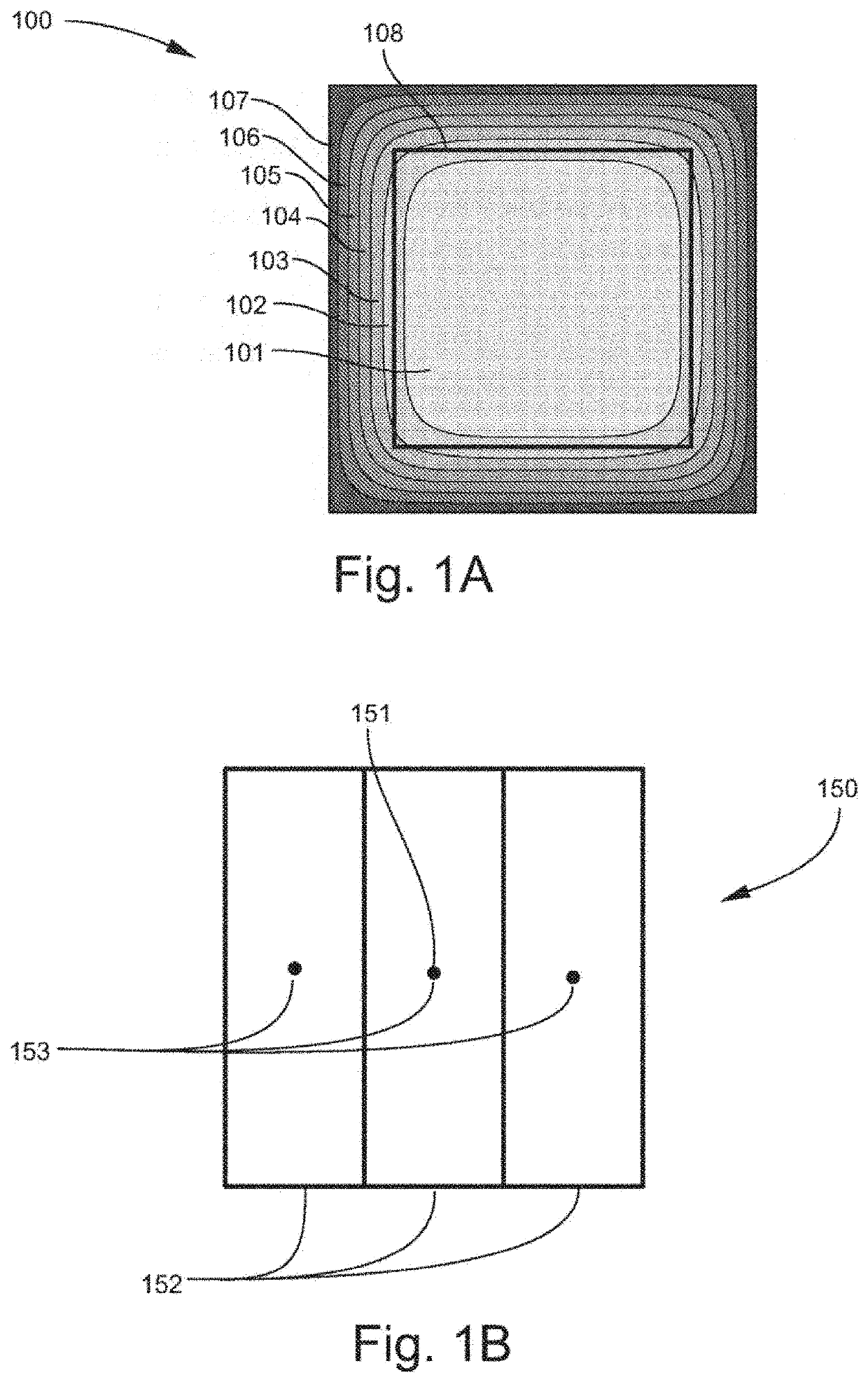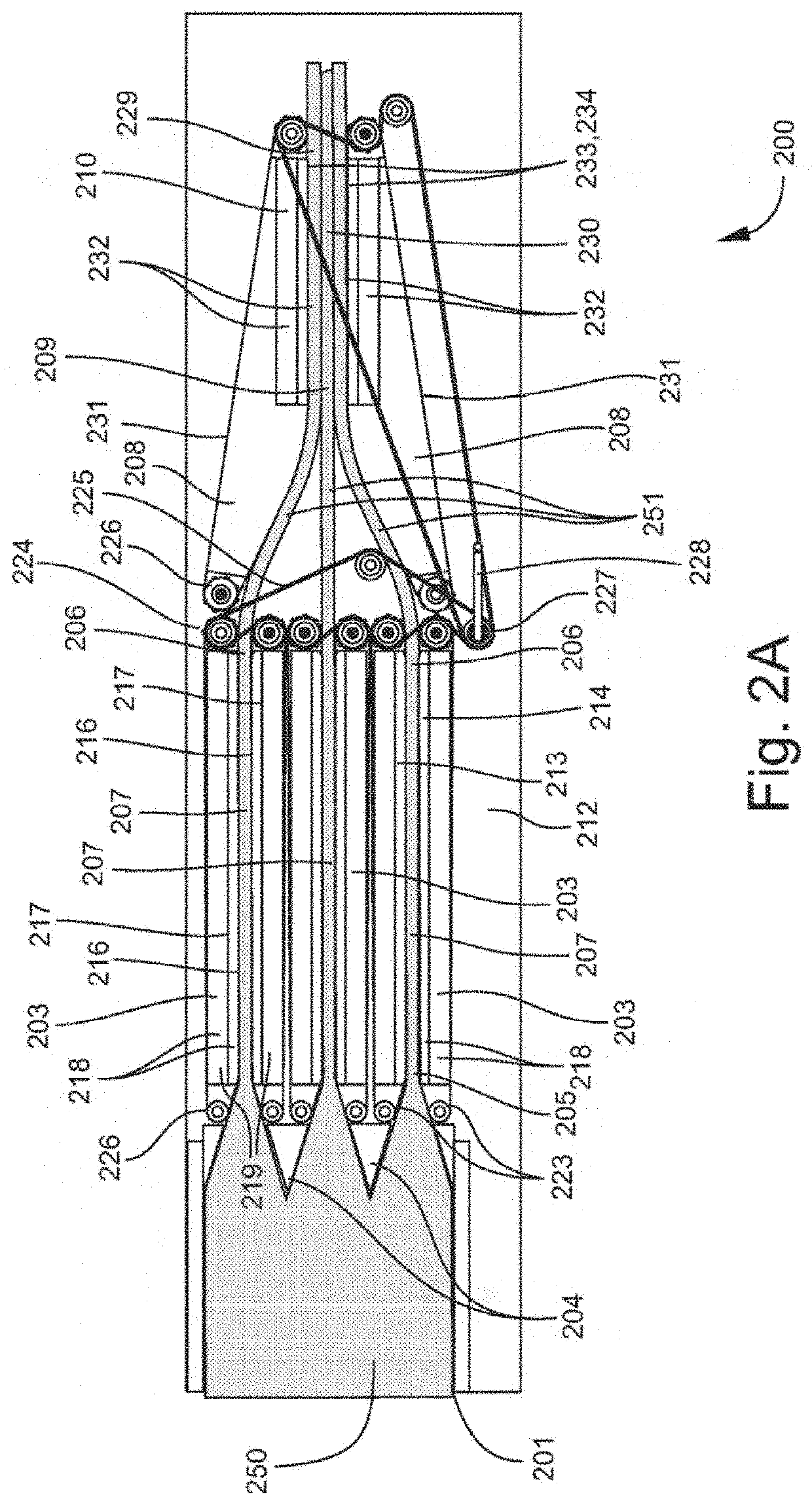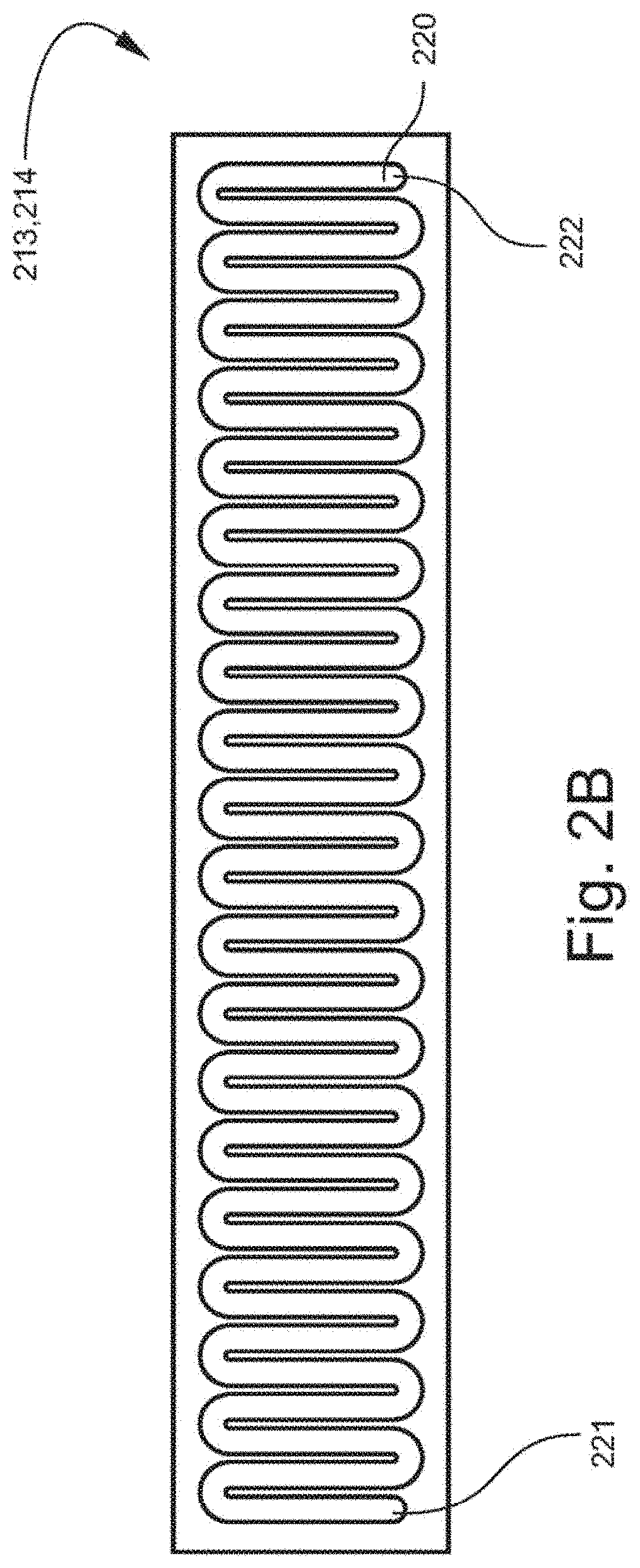Some novice techniques call for
microwave heating of the curd, which unevenly heats the curd through its crossection.
Any of these in excess may lead to failed results with denatured or damaged
protein strands, loss of
fat content or over
salting.
It is difficult to achieve the high
quality standard of artisanal pasta filata cheese in
mass manufacturing context due to high volume and time constraints.
This multi-step technique of separately forming and cooling the cheese blocks results in substantial loss of time and space as well as loss of inherent desirable qualities within the cheese.
The
extrusion method tends to excessively work the cheese,
cutting into cheese fibers and internal pockets that naturally retain fat,
moisture and
flavor.
This results in loss of
flavor, change of texture and decrease in overall
mass.
Under current large scale manufacturing processes, the final product tends to be of inferior quality in
moisture,
flavor, and texture compared to artisanal style crafted pasta filata cheese.
Another
disadvantage of current methods that use brine solution to work the cheese (to either heat or cool the cheese) is that the solution has the effect of washing the cheese.
This becomes a problematic
scenario if foreign material is introduced and mixed into the cheese
mass.
Once the latices are formed, it is difficult to reopen the bonds to allow new molecular connections without denaturing the entire cheese construct.
Composite pasta filata cheese products are not available in mass market primarily because current manufacturing processes that rely on brine solution for
temperature control risks washing away
food particles and resulting in frequent
contamination of the brine solution.
Current systems for manufacturing pasta filata cheese does not make it practical or feasible to produce composite pasta filata cheese products.
This patent may work fine for processed cheese but the elastic nature of pasta filata cheese is more difficult to manage by this simplistic method.
This process does not provide for shaping by mold.
There remains a problem of over
processing from reuse of trimmed material and decreased flavor and
moisture content from over
brining.
Lastly, this application does not contemplate actual shaping of the cheese, and therefore renders this application inapplicable to the manufacture of cheese blocks, sticks or other molded forms.
As with other devices intended solely for comminuting, this device does not provide a method for molding the cheese to shape under careful cooling conditions.
Nor does it provide a method for properly texturizing the cheese for a more thoughtful texture since the end purpose of this product is to be eaten in a shredded or heated
molten state.
One drawback of this device has to do with slumping effect of warm pasta filata cheese during the stretching phase.
Therefore, when pulled across a length of space without a means for support, the cheese will naturally drag and
slump by gravitational affect.
The result of stretching the warm cheese over extensive open space is an uncontrolled variability in thickness and
fiber formation along its length as affected by gravity and its own weight due to slumping.
As with other
spooling methods for creating tension, the slumping problem of this invention may be overcome by providing a greater speed for the front spool, but this could result in secondary problems of even
texture control while not completely eliminating the problem of slumping near heated segments.
There is also a likely chance of unspooling on portions of the strand affected by slumping.
The device in this case does not provide a supporting means between the
pipe outlet and the first spool to minimize slumping without reducing the tension effect of the spool.
The cheese being concurrently stretched and cooled in this case, will further run into problems of tearing due to the tension exerted on cooled cheese
fiber.
However, the cheese lacks sufficient and proper texturizing treatment.
This device contemplates
protein fiber formation primarily from
auger and forced
extrusion which unfortunately cuts into the
natural fiber strands within the cheese mass, compacts the mass and squeezes out fact pockets inside the mass.
Heavier and thicker blocks of cheese will have a difficult time maintain its place along the spool due to slumping affect while affected by greater compaction from its own mass and weight against the molding tube.
Therefore, this device would be impractical for mass production of larger sized
mozzarella cheese blocks due to compromised quality from increased force needed to push the thicker block through.
The challenges however remain the same in terms of the negative effect of brine solution on retention of foreign
food particles and the risk of contaminating the brine solution.
The process of incorporation is inefficient, requiring more frequent replacement of hot water to avoid cross contamination.
Furthermore, where a definition or use of a term in a reference, which is incorporated by reference herein is inconsistent or contrary to the definition of that term provided herein, the definition of that term provided herein applies and the definition of that term in the reference does not apply.
 Login to View More
Login to View More 


